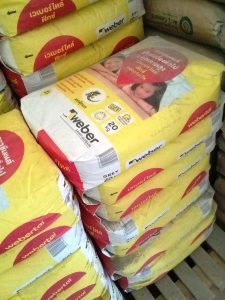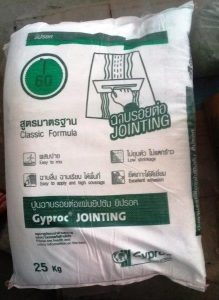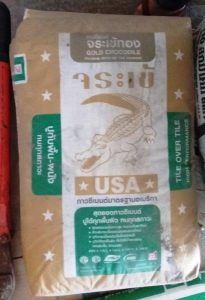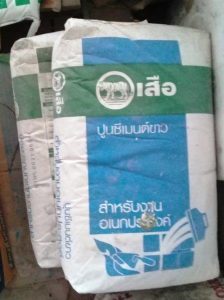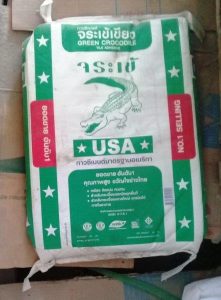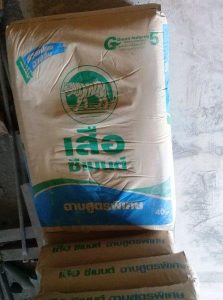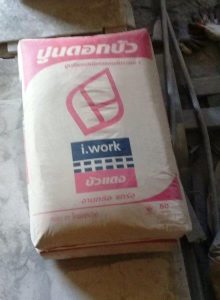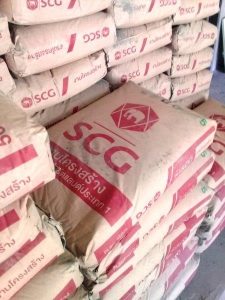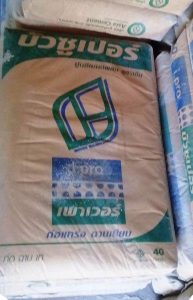About Cement and Concrete For House Building in Thailand.
Concrete by truck or mixed by hand.
When ordering concrete you need to tell which grade of concrete to be delivered by the ready mix trucks.
A receipt is issued and the grade of concrete is marked on the receipts.
I won’t mention the grades here because what might be the hardest grade in Chiang Mai in 2018, might not be so in Chiang Rai in 2020 and the grade of concrete is extremely important, you need to learn what is the standards in your area.
With many things in Thailand I find the bigger companies more trustworthy when it comes to honesty and you get what you pay for.
So check the receipts before the truck unloads and see that you have the right concrete.
There were two common types of concrete used on the house, hard and not so hard.
I used only the hardest concrete throughout the construction except for the outdoor paths.
The ground floor was poured with the hard concrete, but I was told I could have used the softer concrete.
Some concrete was mixed by hand and the bigger lots were delivered by the ready mix trucks.
It is not easy ordering the concrete by size of truck as they seem to use any trucks that are available at the time regardless of size. A load might come in one truck or two trucks.
With the last truck on a big pour, the amount of concrete needed can be adjusted by a phone call to the yard, this seems to be common practice and is helpful so you don’t have too much or too little.
Here is where you really do need a trustworthy Thai person to do the ordering if you do not speak Thai.
Also watch that the driver empties his truck and not keeping some for a little job of his own that he drops off on the way back to the yard.
The usual concrete wagons delivered the concrete and a crane was hired to lift it to the upper floor.
The crane came three times, first to pour the upper beams, then to lift the preformed slabs into place for the floor and again to pour the upper floor.
( I have often seen the slabs used on suspended ground floors, so they are not just for upper floors.)
The concrete for the piers was mixed by hand, and, I don’t know why but the bathroom floor down stairs was mixed by hand.
The shutters, or form work for concrete is usually hired and payed for after they are finished with and picked up by the owner.
They might be made from wood or plastic with steel inserts, both are okay to use.
Hired form work should be returned quickly or extra costs will occur.
Concrete and cement mixed by hand.
There are many cements to learn about, concrete, bricklaying, rendering, tiling etc.
You should always buy the bags of cement and have them delivered, for if the workers have quoted a price including the cement, then they will be able to make more money by not using a lot of cement.
The Portland cement is for hard concrete and used securing the corners on walls to be plastered. Portland cement maybe called ‘red’ cement – it is in a red bag.
The softer cement is in a green bag and called green cement. This is for brick laying and sometimes for floors, although I prefer the harder cement for floors.
The blue bags are a soft cement and used for floor tiling and for rendering.
I would order these at ten or twenty bags to be delivered from the local hardware store and often go back a pick up a few bags in the car.
On one occasion the workers wanted a certain brand of cement and after searching I found that it was not available in Chiang Mai – the workers came from Burma, they settled for the local brand.
There are two common grades of sand, coarse and fine, the coarse for concrete and brick laying and the fine for rendering.
Sand and stones (blue metal stones) are delivered as needed in one or two cubic meter loads.
Stones come in several grades with the mixed size being the common one used for concrete.
The special ready mixed cement for wall tiles comes in smaller bags and many varieties.
These are mixed in a bucket with a hand drill mixer made for a piece of the thinner reinforcing steel.
